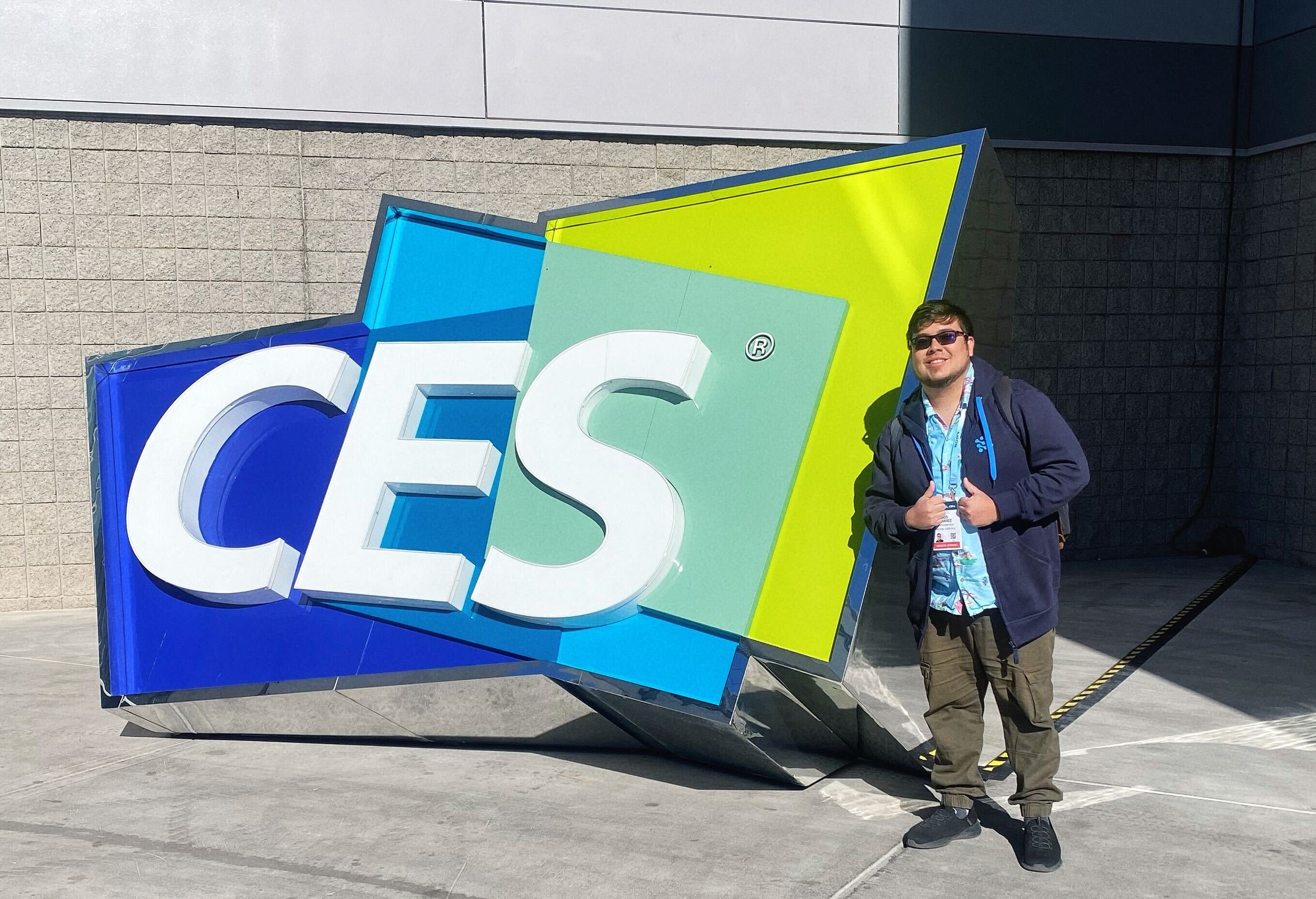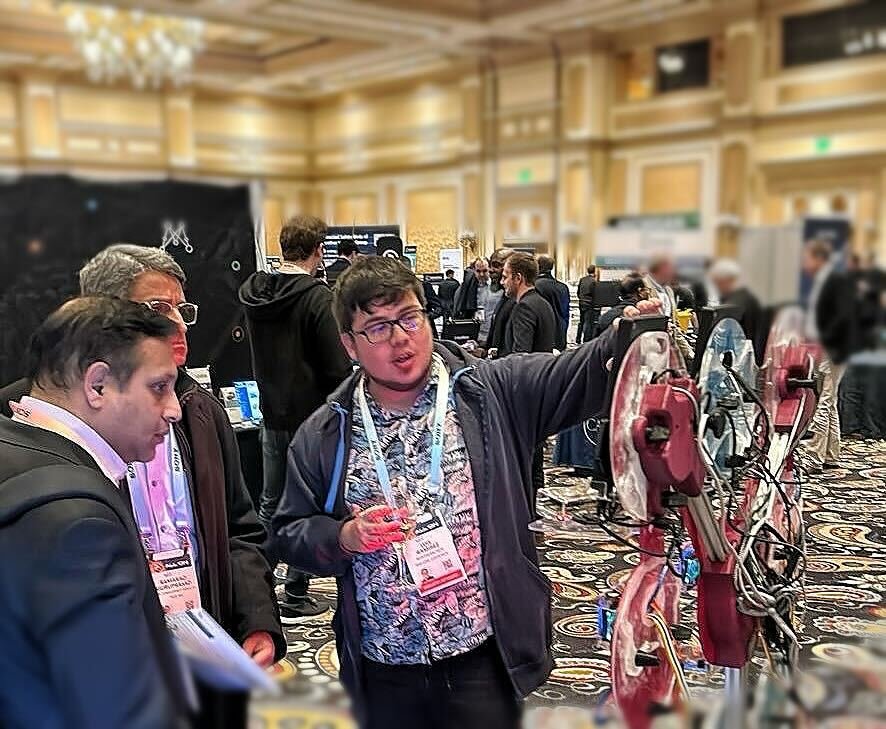Insights from CES 2024

Billed as “the most powerful tech event in the world,” CES 2024 brought together more than 135 thousand attendees and four thousand exhibitors to experience over 2.5 million square feet of exhibition space and thousands of speakers. Fifteen percent larger than the previous year, CES 2024 covered everything from the AI hype to digital health applications from startups and Fortune 500 companies.
Of course, technology is the center of the CES 2024 story. But among the impressive speakers and exhibits emerged three key themes. These themes underscore the future of IoT and technology generally and what is happening and will be required from businesses to be successful for years to come. The business world is transforming across industries and sectors, from small startups to large enterprises. And companies are embracing this transformation and the opportunities that come with it successfully.
1. Software-centricity: Tech-first companies cross lines
“...every company must become a tech company…”
Gary Shapiro President & CEO Consumer Technology Association (CTA)
Once, it was commonplace to group companies into one of two categories: hardware or software. Hardware companies focused on physical products, like traditional automotive OEMs, home appliances, and manufacturing companies. Software companies like Microsoft, Adobe, and Salesforce focused on digital products. With connectivity and technological advances came the transition to IoT and its many precursors and derivatives. As seen at CES today, it is rare to see hardware without software and, on the flip side, new software without a physical or hardware application.
In traditional industries, the interplay between legacy, original hardware-focused OEMs and newcomer, software-centric startups routinely makes the headlines, most notably in the automotive industry. CES was no exception.
Chinese-based automotive OEMs and suppliers showcased the most innovative (and perhaps risky) concepts at CES. Meanwhile, their traditional OEM counterparts remained more conservative with an iterative approach. For example, Chinese company XPENG displayed a flying car concept, mixing a drone and vehicle, while Mercedes demonstrated technology that modifies music tracks with every play. Fly cars aside, the juxtaposition exemplifies the significant difference between new and traditional OEMs regarding risk and innovation.
Taking this further, CES also showcased the blurring or erasure of traditional lines. Electronic vehicles (EVs), software-defined vehicles (SDVs), and autonomous vehicles (AVs) are no longer solely demonstrations from traditional automotive OEMs and newcomer counterparts. Traditionally known for consumer electronics, LG unveiled its vehicle of the future as a primary attraction point at CES. Complete with autonomous driving and all the gadgets LG is known for, the LG Alpha-able is not only a futuristic concept of technological possibilities but a clear signal that companies are transforming beyond traditional sectors.
The company of the future is not hardware or software. It is a tech company. And under that mantle, innovation – and the competition to follow – will expand exponentially.
2. FOTA & OTA everywhere: Over-the-air updates are critical
With technology at the center of the event, foundational tech requirements are often highlighted. In years past, tech requirements often focused on data – hosting, storage, transmission, etc. This year, across exhibition sections and companies, the ability to remotely update devices and applications was everywhere.
Firmware over-the-air (FOTA), a subset of general over-the-air (OTA) updates, was showcased across booths, banners, and demonstrations. OTA updates were most notable across the automotive and IoT sections, where the ability to continuously update firmware, software, and applications already in the field significantly extends OEMs’ capacity to improve new technology. The Detroit Free Press highlights how future OTA updates could improve the range of today’s EVs. The Lotus Emeya Hyper-GT touted numerous navigation improvements with OTA update capabilities. Aptiv’s Windriver technology showcase included a cloud-based software update to its demo vehicle.
CES 2024 announcements also highlighted the importance and power of OTA updates. BMW released a new ConnectedDrive system to be available to users over the air in 2024. Jabra announced its Cutting-Edge Updates to Elite 8 Active and Elite 10 to be through “Updates are via the Sound+ app, and will be available to all users, existing and new, via a hassle-free over-the-air update at no cost.” Connectivity and software innovator 1NCE announced its 1NCE plugins, including the ability for its customers to integrate FOTA capabilities seamlessly.
As companies become tech-centric, the critical function of OTA updates across industries and devices is clear. OEMs can continue to improve and release features while consumers receive the benefits of innovation faster and more efficiently.
3. Innovating where it matters: Accelerate via an ecosystem and partner approach
Lastly, it is becoming increasingly clear that technology is too advanced for one company to do everything successfully alone (and some have tried). Machine learning, artificial intelligence, autonomy – with products encompassing increasingly complex technologies and exponentially more technology-based components, developing all capabilities in-house is unrealistic. As seen in past revolutions, it is more efficient to specialize. Companies are focusing on what differentiates them and partnering, buying, or externally sourcing what does not.
The power of partnerships and ecosystems resonated throughout CES 2024. NXP Semiconductors and Honeywell collaborate on smart energy solutions for buildings. Amazon touted numerous collaborations, including Panasonic, Siemens, and BMW. Qualcomm and Bosch introduced their central vehicle computer system. Embracing the technology-centric mindset, some companies are creating their own ecosystem of partners, such as Samsung’s partner accessory program.
Highlighting the shift away from homegrown, build-it-yourself, proprietary capabilities where there is no differentiation, companies are partnering to leverage specialized expertise and accelerate the time-to-market for new products and services. More often, traditional hardware players join software giants to create the ‘technology’ company mindset. The efficient path forward is through partnerships and ecosystems. Importantly, for innovation, this best-of-breed approach is better for both companies and consumers alike.

The future of the IoT ecosystem
As scale, complexity, and usage increase throughout the next year, it can be expected to see these three themes emerge stronger. They underpin the IoT and technology revolution as companies strive to compete in an increasingly competitive, innovation-driven global market.
The winners will be the OEMs that embrace technology and software-centricity and master the fundamentals of that mindset – like over-the-air updates and device lifecycle management – without sacrificing what differentiates them in a fast-moving marketplace. Good decision-making on when to spend the time and money required to build and maintain solutions from scratch is becoming ever more important.
Recent articles
Failed lifecycle management is unacceptable in FDA and MDR compliance
The struggle to reach global markets for medical device manufacturers: The importance of international compliance
The differences between the US FDA’s device approval process and the EU’s medical device regulation (MDR): An essential dual-compliance framework for global manufacturers
Learn why leading companies choose Mender
Discover how Mender empowers both you and your customers with secure and reliable over-the-air updates for IoT devices. Focus on your product, and benefit from specialized OTA expertise and best practices.




